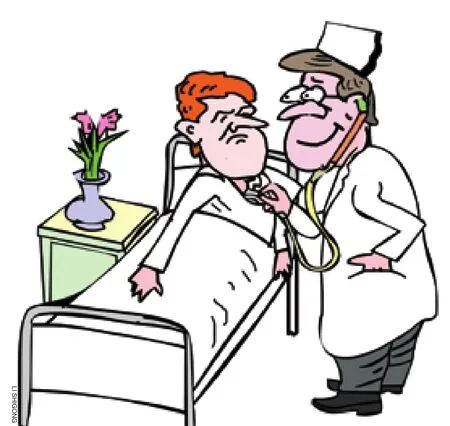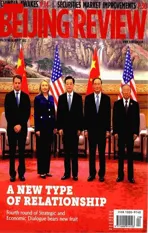Special Treatment
2012-10-14ByThomasRippe
By Thomas Rippe
Special Treatment
By Thomas Rippe
The health insurance for foreigners at my company does not cover visits to Englishspeaking doctors. This isn’t as bad as I first thought because the English-speaking doctors usually don’t speak English anyway.
Beijing has a very wide range of medical options. The high end is very professional—it’s also very expensive. These clinics are for wealthy Chinese people and expats working for large multinational corporations that typically cover all their medical expenses. If you can afford it, you can get the same quality medical care you get in any developed country.
Lower-end clinics are overcrowded, and doctors and nurses are poorly trained and underpaid. A Chinese friend was told that he had pancreatic
cancer (popular at the time because Steve Jobs had it), and that he needed an operation to remove his spleen. When he woke up after surgery he found out they had removed his appendix. A Canadian friend at a similar clinic hobbled out on a broken toe with an IV needle still in her arm rather than allow the doctors to operate on her toe.
In between the best and worst are about half a dozen clinics that provide decent service and have separate wings for Chinese and foreign patients. Prices are a bit higher than the low-end clinics, but are still affordable. Many of the doctors, and especially the specialists, serve patients on both sides. The only differences are the price and the wait time (and cleaner toilets). Because of the cost difference, the insurance provided to foreign employees at state-owned enterprises does not cover treatment at the foreigner wing of the clinics.

Not long ago I went to one of the midrange clinics to fi nd out why I was having headaches and occasional dizzy spells.On my fi rst visit I went with the Canadian woman with the broken toe. Her family is from Beijing and her aunt is a nurse, so she knows the ins and outs of the Beijing clinics. After getting through patient registration we wandered through a large and crowded clinic and waited in a long line next to a smelly toilet. The exam room was small and had two doctors, with a curtain down the middle in case one of the patients needed to undress. The doctor was quick,thorough and polite, and referred me to a specialist for further testing. The visit cost less than $5.Because there are too many patients and not enough equipment I had to wait a month before getting the tests. When I went for a follow-up exam the friendly Canadian with the broken toe wasn’t available, so I went to the foreigner wing.It was cleaner, brightly-lit and had sparkling toilets. The exam room was larger and had only one doctor. The specialist was the same one I had seen before,but this time I had to pay about$30.
The whole process was sort
of pointless because while waiting for the tests I decided to try my luck on Google. I found the most likely cause of my symptoms was something called Meniere’s disease, which is a blockage of the passages in the inner ear. Google also told me the most common treatment is allergy medication, which I already had. I took a pill and a few hours later my symptoms were gone. At the follow-up visit the specialist was pleased with my progress, but a bit annoyed that my self-medication had tampered with her expensive tests.
I never did get reimbursed for the cost of going to the Chinese clinic. After a few failed attempts I decided the $5 wasn’t worth the trouble. At least Google still works in China—most of the time.
The author is an American living in Beijing
